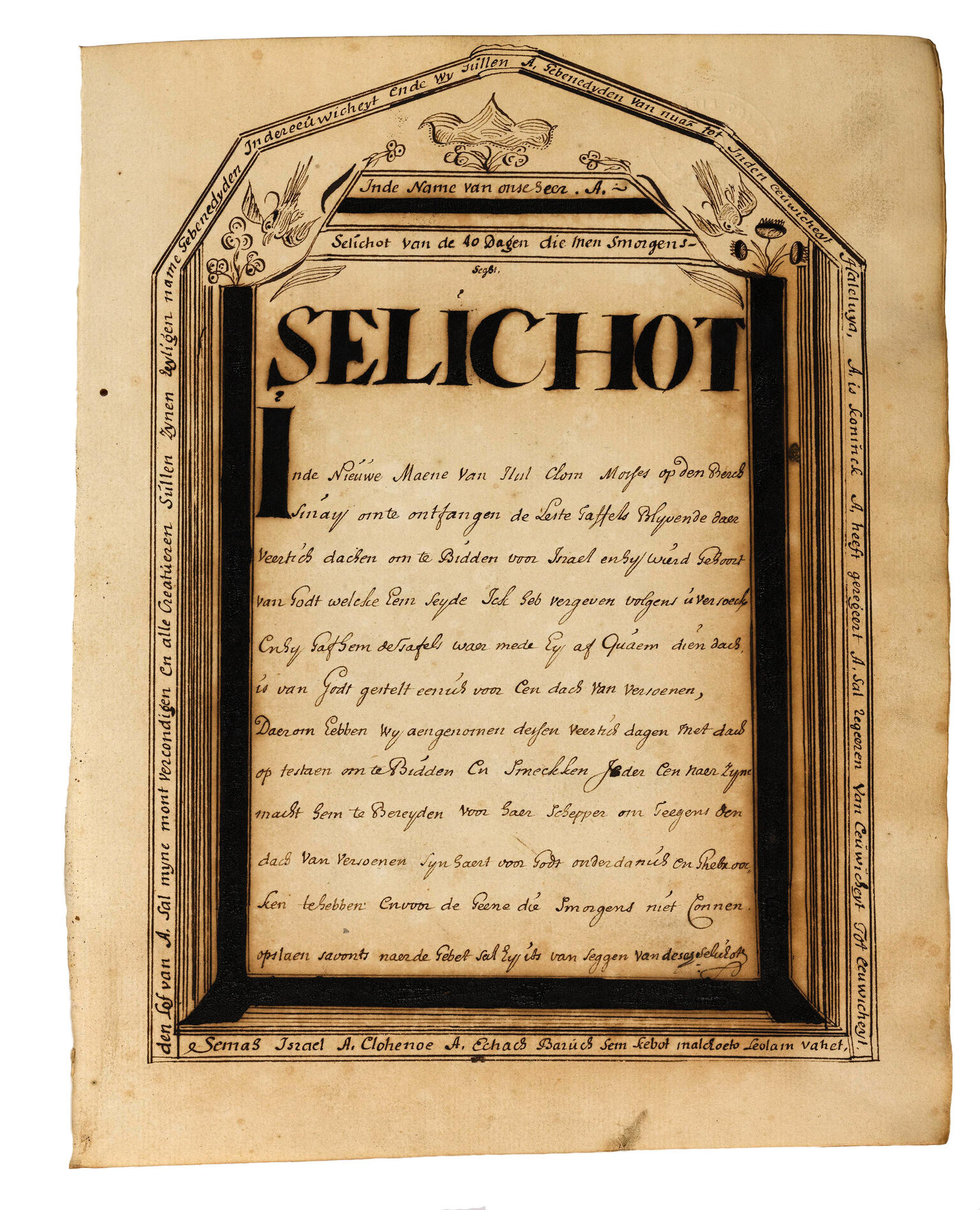Dutch Translation of Penitential Prayers and Psalms
David de Aron Uziel Cardoso
1714
Credits
MS X893 J71, Rare Book & Manuscript Library, Columbia University in the City of New York.
Published in: The Posen Library of Jewish Culture and Civilization, vol. 5.
You may also like
Yiddish Translation of Isaac Aboab’s Menorat ha-ma’or
Moses Frankfurt said: The holy Torah tells us that the Holy One commanded Moses to interpret the Torah very plainly (Deuteronomy 27:8), to explain it clearly in seventy languages so that all nations…
Printers’ Preface: Yiddish Translation of Sefer magishe minḥah
With God’s help, we undertook to print the Torah, prophets, and writings with the commentary by Rashi, of blessed memory, and also with a Yiddish commentary, to understand the simple verse as it…
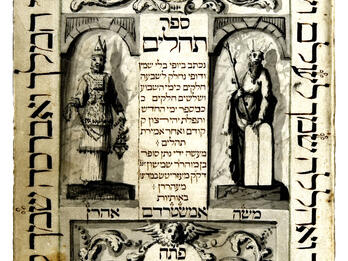
Nathan ben Samson of Meseritsch (scribe and artist), Psalms
This elaborately decorated title page is from a book of Psalms created by the scribe Nathan ben Samson in Gross Meseritsch, Moravia (today Velké Meziříčí, Czech Republic). On the left is Aaron in his…
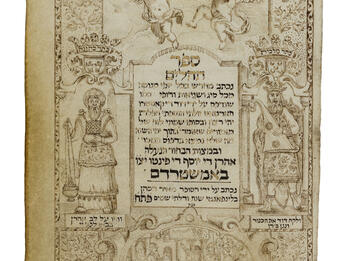
De Pinto Psalter
This decorated psalter was made for Aaron de Joseph de Pinto, a member of the prominent Portuguese Jewish family in Amsterdam. It is a manuscript, copied from a print edition done by David de Castro…
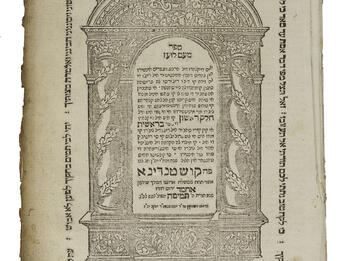
Me‘am lo‘ez (From a People of Foreign Tongue): On Genesis
The Book of Me‘am lo‘ez is the explication of the entire Hebrew Bible in Ladino, explaining the way of life which a person must lead as the sacred law commanded, and also to know about all that…

Jacob Huli’s Me‘am lo‘ez (From a People of Foreign Tongue)
The masterpiece of eighteenth-century Ladino literature is the encyclopedic commentary on the Bible, Me‘am lo‘ez (From a People of Foreign Tongue), by Jacob Huli, the first volume of which was…
Engage with this Source
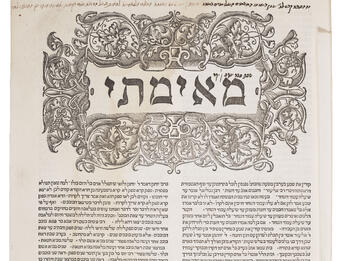
Related Guide
Jewish Printing and Book Culture
1500–1750
Jewish printing unified far-flung communities by standardizing religious texts, created textual uniformity, and enabled vernacular translations, and facilitated the spread of Jewish texts and knowledge.
Restricted
Related Guide
Early Modern Jewish Languages
1500–1750
As Ashkenazi and Sephardi Jews migrated eastward, Yiddish and Ladino emerged as distinct languages. Both languages developed literary traditions, as print became more widespread.
Creator Bio
David de Aron Uziel Cardoso
17th–18th Centuries
David de Aron Uziel Cardoso was a scribe in Amsterdam in the early eighteenth century.
You may also like
Yiddish Translation of Isaac Aboab’s Menorat ha-ma’or
Moses Frankfurt said: The holy Torah tells us that the Holy One commanded Moses to interpret the Torah very plainly (Deuteronomy 27:8), to explain it clearly in seventy languages so that all nations…
Printers’ Preface: Yiddish Translation of Sefer magishe minḥah
With God’s help, we undertook to print the Torah, prophets, and writings with the commentary by Rashi, of blessed memory, and also with a Yiddish commentary, to understand the simple verse as it…

Nathan ben Samson of Meseritsch (scribe and artist), Psalms
This elaborately decorated title page is from a book of Psalms created by the scribe Nathan ben Samson in Gross Meseritsch, Moravia (today Velké Meziříčí, Czech Republic). On the left is Aaron in his…

De Pinto Psalter
This decorated psalter was made for Aaron de Joseph de Pinto, a member of the prominent Portuguese Jewish family in Amsterdam. It is a manuscript, copied from a print edition done by David de Castro…

Me‘am lo‘ez (From a People of Foreign Tongue): On Genesis
The Book of Me‘am lo‘ez is the explication of the entire Hebrew Bible in Ladino, explaining the way of life which a person must lead as the sacred law commanded, and also to know about all that…

Jacob Huli’s Me‘am lo‘ez (From a People of Foreign Tongue)
The masterpiece of eighteenth-century Ladino literature is the encyclopedic commentary on the Bible, Me‘am lo‘ez (From a People of Foreign Tongue), by Jacob Huli, the first volume of which was…


